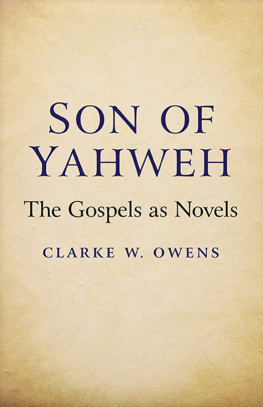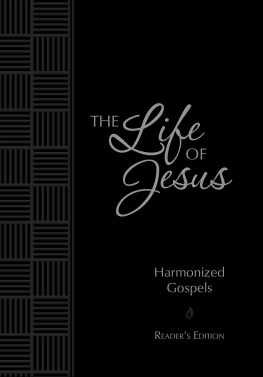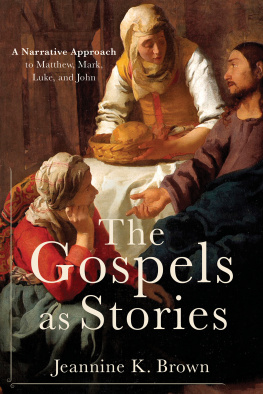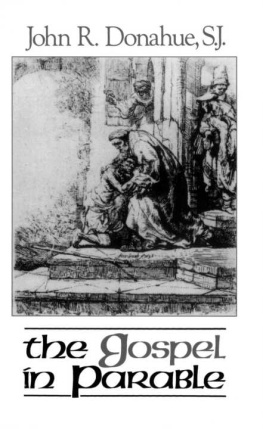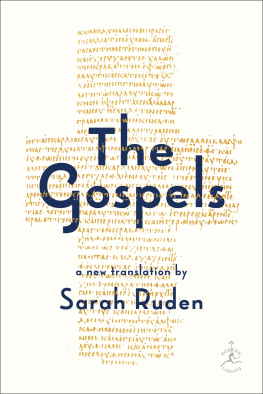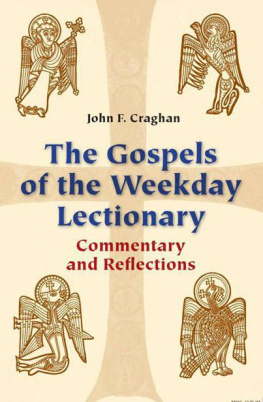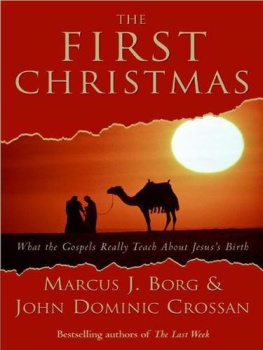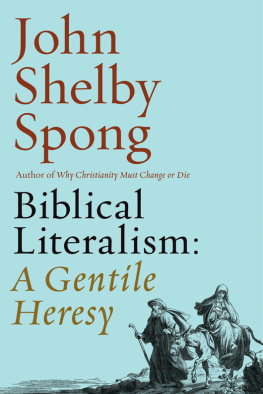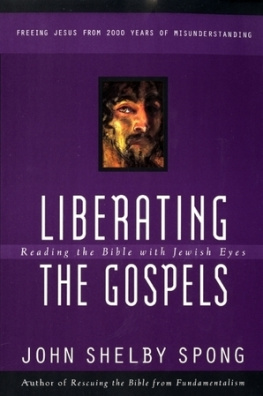The author gratefully acknowledges the permission of Polebridge Press to quote liberally from Robert J. Miller, ed., The Complete Gospels: Annotated Scholars Version, 1992, 1994. Except where noted, gospel quotations are from this source, referred to herein as the ASV.
Thanks to Jeri Studebaker for advice and encouragement.
This book is for D, who can identify.
Introduction
When we read fiction, we assess plausibility using special rules. We are not to throw our ordinary perceptions out the window, but to employ them in certain distinctive ways. The perceptions we employ include our understanding of natural or physical laws; of the literal and figurative uses of language; of aesthetic form, consistency, and balance; of ranges of human character; of ethical imperatives, and so on. Our entire understanding of how the world works is involved. The fact that an imaginative construct may require an adjustment of ordinary assumptions in a category of understanding that is also used outside the realm of fiction-reading such as in the understanding of natural laws does not mean that such a category does not apply to fiction, even to non-realistic fiction.
The types of plausibility to be assessed are affected by the adjustments we have agreed to make to accommodate the particular work; e.g., when we are adjusted for fantasy, we make a different type of plausibility assessment with respect to natural and physical laws than we do when reading a realistic novel. When reading heroic literature, we make an adjustment in the assessment of plausible character that differs from the assessment of realistic literature, and so on. Accordingly, there is always a correlation between our sense of the type of fiction we are reading its mode and genre and our understanding of the works meaning. We are always making decisions and choices about the text we are reading, and these decisions and choices ultimately determine what we take away from the text, the quality and level of the impact on us.
In the case of New Testament narrative which I am reading in this book, consisting of the gospels and the Acts of the Apostles, I have made decisions which affect this impact greatly, namely, the decision to read the narratives as fiction, and the decision to read them as texts largely discrete from the rest of the Bible, both Old and New Testaments. This discreteness does not mean that I ignore the Biblical context, and in fact I accept arguments which others have made that these texts are largely based on Old Testament analogues, but rather I mean that I am reading non-doctrinally: both by assuming the stories are not historical, and by not reading them as fulfillments of prophecy, and not as somehow mutually consistent when they are not. In reading non-doctrinally, of course I am reading them out of the context of their intended purpose. Therefore, some justification is in order.
Reasons to Read the Gospels as Fiction
There are good reasons to read the gospels as fiction. Indicia of fiction are obviously present in these works. In the absence of doctrinal belief, which requires the reader to construct and to impose on the Greco-Roman world a separate empirical reality from that which one normally inhabits or posits, the most obvious indicator is the use of fantasy. Even committed Christians have argued that the fantastic details of the gospels should be read as fiction, or at least not as literal fact. They argue, for example, that the virgin birth of Matthew and Luke derives from the effort to fulfill a prophecy from Isaiah 7:14 which was based on the Septuagints mistranslation of the Hebrew word for a young woman.[] The purpose we have for not relinquishing the gospels to fundamentalist Christians is similar, but not the same: we hope to preserve the book. The gospels are too rich and suggestive to be abandoned to simplistic and doctrinaire readings, which is the same as marking them as off-limits to intellectuals. I see no good reason to do this.
The second indicator of fictionality is the evidence, seen in comparisons among the gospels, of the reworking of themes and episodes without regard to reliability or stability in the fact pattern, but with great emphasis placed on putting across ones lessons. We see this in the episode involving the woman who anoints Jesus, the protest against it, and the Simon or Lazarus character, which is the episode I refer to in this book as the stopover in Bethany, appearing in the three synoptic gospels. The constantly shifting details, the shifts in characters, the alteration of a parable to an incident, and the wide variation in both meaning and event from the first version of this episode to the last, reveal beyond a doubt that the foremost urgency in the minds of the writers was not giving an accurate account of events, but rather shaping a tale for its best didactic purpose. These purposes are discussed with more detail in my final chapter, but primarily by reference to midrashic theories which are summarized without great detail, as my purpose does not require great detail. Readers who wish to study this topic may do so by referring to the cited texts. Related to this idea, in Chapters 1 and 8, is the idea of the connection between cultural survival and messianism, which in its own way provides further evidence for the allegorical nature of the gospels: the gospels thus contain a deep cultural truth, but the details of the story are invented.
A similar example of purposeful manipulation by the authors is seen in their use of characters (the disciples) who inhabit a world of free-flowing magic, and yet who at times exhibit difficulty in understanding or believing in the magical powers of the very leader they profess to follow, against the evidence of their senses. This problem can arise only from construction and invention of a fictional nature. The critic Tzvetan Todorov has described this technique of invention, which is done for the purposes of creating identification between the hesitating character and the reader, as the defining characteristic of fantastic literature.[]
A third indicator of fictionality is the figurative, usually allegorical, use of language. A character whose name means Anointed Savior and whose role in the story exactly matches that name is likely to have been invented by authors writing with an allegorical or quasi-allegorical purpose. The above-mentioned techniques all belong to fiction writers with didactic purposes, not to historians, biographers, or memoirists.

